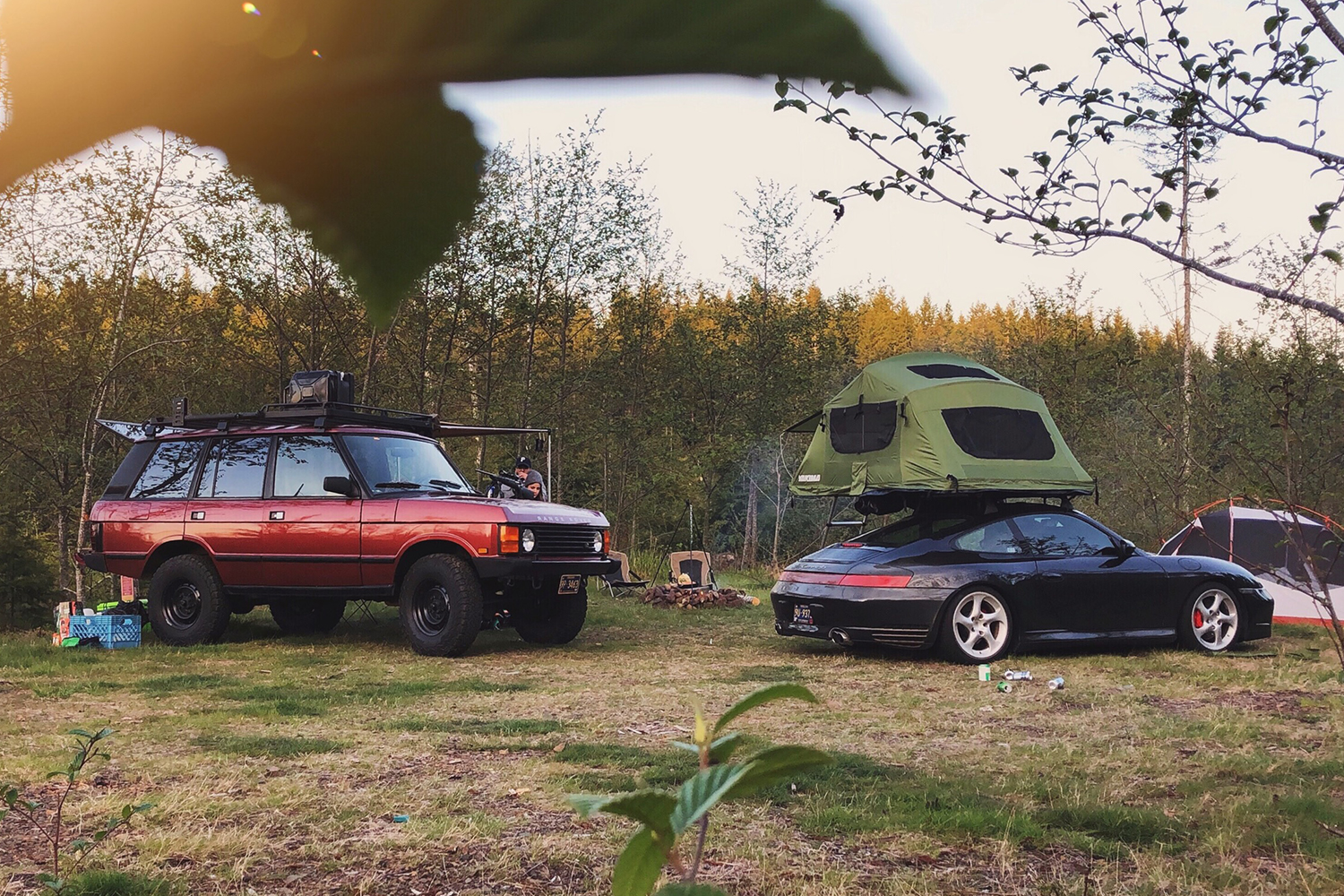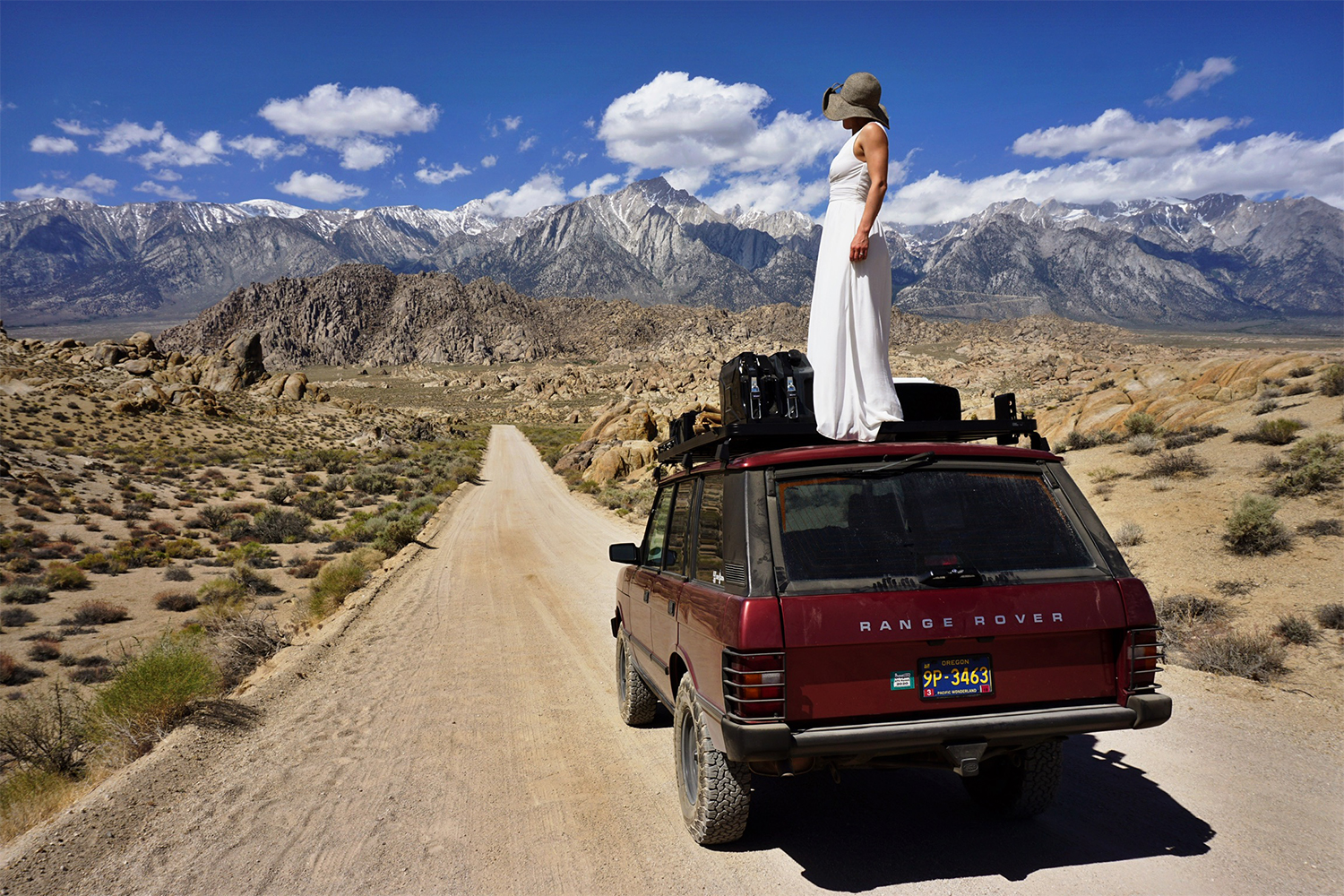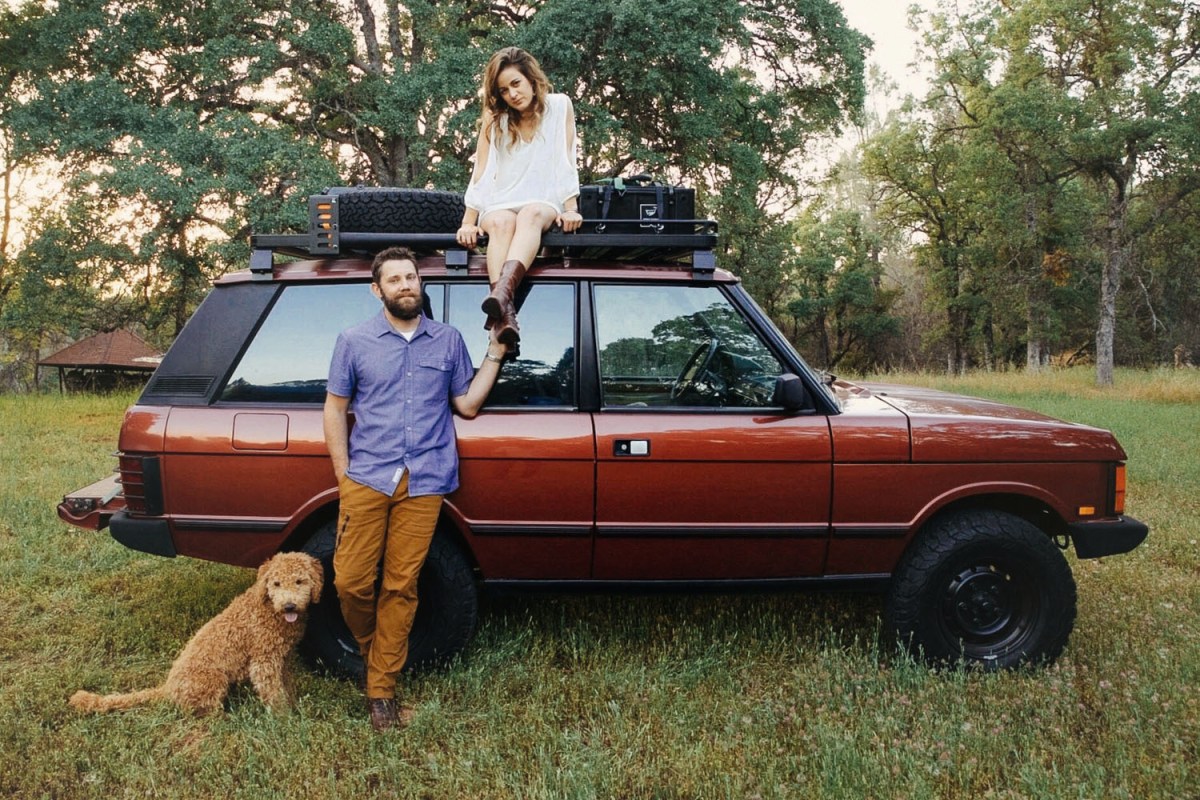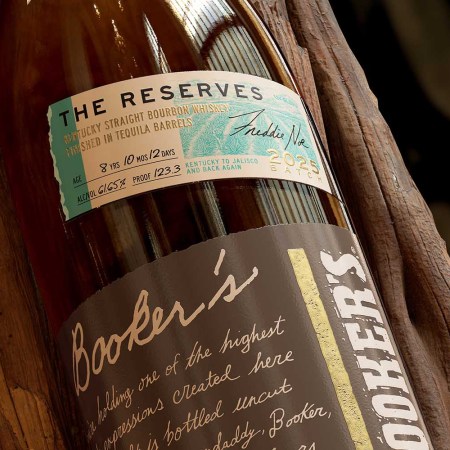When you’re buying a classic car, who can you trust to give you the unvarnished truth? Not the seller, auction house or potential Craigslist scammer. What you need is someone who actually has the car you want, which is why we started What I Wish I Knew, an automotive series in which we interview owners to get the scoop on some of the most popular dream cars. Today’s vehicle: The Range Rover Classic. (This story was originally published in 2020.)
Retro SUVs are hot and getting hotter.
“As a category, vintage SUVs has been one of the strongest segments of the enthusiast or collector market for the last five or six years,” Brian Rabold, VP of valuation services at Hagerty, told us in July.
However, not all sport utility vehicles are sentimentalized the same. If you have a soft spot for, say, ’93-’97 U.S.-spec Land Rover Defenders or first-generation Ford Broncos, you can expect to pay absurd prices, even for the rust buckets. But if the SUV you have your eye on is an old-school Range Rover, you’re setting yourself up for success.
When the Range Rover Classic — the name for the first-gen model built between 1969 and 1996 — first came to the U.S. in 1987, Car and Driver called it “sort of like an air-conditioned dune buggy for people who drink bottled water and get expensive haircuts.” Today they’re conversely coveted for their boxy utilitarian style and relative affordability. Back in 1987, they started around $30,000 (about $62K in 2020 dollars), but now Hagerty puts the average price of a 1991 Land Rover Range Rover Classic at $13K.
Brock Keen has been driving his ‘91 Range Rover Classic in Trocadero Red for a few years — whenever he’s not car camping in his Porsche 911 — and documenting his exploits on Instagram at @rrcroadtrip. We asked Keen to give us a full rundown of his experience, from buying the SUV on Craigslist to the mechanical failures to the most memorable road trips to, of course, what he wishes he knew before he bought it sight unseen.

InsideHook: How long were you thinking about buying a Range Rover Classic, and how did you come to own this one?
Brock Keen: Up until this RRC, I had never owned an SUV. It had always been fast, low German cars. To be honest, and probably like a lot of people, I was a little worried about all the bad things I had heard about owning a Land Rover. When my wife and I decided to get our goldendoodle, I decided that was the best time to justify us getting a “dog car,” and what better dog car than an iconic Range Rover Classic! The hunt was on. I didn’t limit my search to vehicles locally; for the right one I was willing to make the drive or even fly to check it out.
After about three months of scouring the interwebs and checking out all the ones near me, I happened across a San Diego Craigslist ad: “***MUST SELL *** 1991 Range Rover Classic.” The photos were terrible, they were dark, taken in a parking lot, and there was even some trash lying around the Rover. The pictures were far from appealing, but the text is what got me: “Two previous owners, records since new, NO RUST, must sell before deployment.” I reached out immediately and started the conversation.
The owner was incredibly helpful. He sent me a ton of photos and walk-around videos, and by all accounts it looked like the RRC I wanted. I was pretty much sold on the car from our conversation. My big question was, would he trust it to be driven on a 2,000-mile road trip? His answer was yes. I bought a plane ticket, packed a backpack with some basic tools and Gorilla Tape, and left two days later for San Diego to buy my first Range Rover then road-trip it home to Oregon.
How to Car Camp in a Porsche, According to Brock Keen of @996RoadTrip
Keen tells us the story behind his Instagram-famous 911 Carrera 4S — the one with the rooftop tentWhat condition was it in when you got it, and what changes or upgrades have you made?
The RRC was in pretty good shape when I got it. I took a huge risk and didn’t have a PPI [pre-purchase inspection] done before I saw it in person. I did have an “oh no, what have I done” moment. My flight down to San Diego had a layover in Boise, and when I landed I got a few slightly cryptic texts from the owner. “Hey Brock give me a call when you can.” “Hey so there was a slight issue with the RRC this morning but it should be good to go when you arrive.” I tried calling before boarding my next flight but never got an answer.
The problem was that the water pump had failed on his “last drive.” His local Land Rover shop got it in immediately and we split the cost of a new water pump. I will say it wasn’t confidence-inspiring considering I was planning on driving it back to Oregon through the eastern Sierra Nevadas, but better it happened to him than to me on my drive back home through the desert! All that said, the overall condition was great for a Range Rover Classic with 149K miles. The paint was fading on the roof and hood, the driver’s seat had a small tear on one of the seams, and like all RRCs the wood veneer in the interior had cracked and was showing its age. Oh, and of course there was a small oil leak. Nothing to really worry about, though. Land Rovers really don’t leak, they just leave their mark.
I’ve updated the suspension with a fresh 2.5-inch lift from Terrafirma, powder-coated black the aftermarket Wolf steel wheels, added a full Front Runner roof-rack system, relocated the spare tire to the roof, added an axe mount, an awning, safari bars and jerry can mounts for extra fuel and water, and I have also updated the headlights to H4s, so seeing down the trail at night is a bit easier. Cosmetically, I actually swapped out the entire interior — the tan interior was pretty worn and I was able to track down a rare dark grey interior that worked well with the Trocadero Red exterior. Lastly, to add a bit of “luxury,” I sourced some OEM sheepskin seat covers to complete my version of a perfect Range Rover Classic.

Where did you get the grey interior to swap in?
I actually loved the Trocadero Red over tan hides but it was really starting to look worn, and not in that “nice patina” sort of way. On a whim I bought a second RRC about 18 months after buying this one — my only reason for doing so is it had some really great parts on it that I thought would add to the capability of the red one. Those things were ARB on-board air, front and rear ARB air lockers (which greatly improve its already amazing off-road capability) and some subtle things like some understated rock sliders from RTE-Fab, one of their low-profile rear bumpers and some differential guards.
I didn’t buy it for the interior, but the more I looked at it the more I thought a dark grey would look pretty good. I took an extended weekend and began disassembling the red RRC making sure to pay attention to every part of the process so I could duplicate it with the silver one and not break something. The whole swap ended up taking about a week due to the fact that I wanted to add sound insulation in every part of the red RRC that I could. That was a great decision, because now a 30-year-old Land Rover is almost as quiet as a 2020 Lexus…well maybe not quite.
Were there any other defects that only came to light after you bought it?
After I got on the road, I discovered that the fan only blew on high — which wasn’t really a big deal — and about 250 miles into the trip I had a panic moment when the coolant-level light started flashing. RRCs are known for blowing head gaskets, and overheating is a major cause of that. It turned out to be a wire for the level sensor that broke when the water pump was being replaced. A quick stop at a local parts store and five minutes under the hood and I was back on the road.
What’s the most underrated part of the Range Rover Classic?
There are really two ways to look at a Range Rover Classic: one is that it’s a luxury SUV and two is that it’s a capable off-roader. I don’t know if it’s underrated, but I would say they probably get underused. Unfortunately, driving down a gravel driveway is the most off-roading most of these see. In reality these RRCs are mountain goats on the wheeling trails and even at 30 years old it will give just about any modern off-roader a run for its money.
What’s the most overrated part?
If you’re buying a Range Rover Classic for modern luxury, you’re going to be sorely disappointed. I would guess that 98% of the RRCs out there have had their failure-prone air suspension swapped out for a traditional spring kit. That’s a good thing, but it also takes away from that nice cloud-like ride they were known for. Along with that, the interior would probably feel cheap if you’re used to more modern cars. My advice is to mentally transport yourself back to the ‘80s and imagine how incredible this vehicle was at that time.

What’s the most memorable experience you’ve had in it so far?
Me, my wife and our dog took it on a 3,000-mile elopement road trip through Oregon, California and Nevada. We visited four national parks, camped for 10 days and exchanged vows in El Capitan Meadow at Yosemite.
What type of person should absolutely not own this car?
Someone who expects modern conveniences and luxury, likes to drive fast and doesn’t like stopping at gas stations.
What else do you wish you knew before you bought it?
I had no idea how slow they were, and it’s not like slow means more efficient. Over the last 15,000 miles I’ve averaged about 11 miles per gallon. Also take into consideration you’re going to have to allocate time to talk to people. RRCs get a lot of attention and a lot of questions. Every one of those fuel stops usually comes with a conversation about Land Rover reliability and capability, and probably a picture or two.
For someone who has never been in one, can you describe the driving experience?
I think when people hear Range Rover they think about floating down the road on a cloud, but with the capability of running the Rubicon Trail if they felt like it. But an RRC, it’s a lot like a leather-lined tractor. It has charm, it has character and you need to understand that when you get it on the freeway or on some twisty mountain road it’s going to be slow and a bit “tippy,” as my wife likes to say. Despite having a V8, you would never use the word “fast” or “quick” to describe it; it’s heavy and the brakes are 35-year-old tech, so it doesn’t stop on a dime. And just for peace of mind, you might catch yourself looking at the gauges a little more often than not.
Here are the good things, though: It’s got a V8 (so it makes great noises), with a full load it weighs two-and-a-half tons (so it feels solid), and the view — the view is amazing. The seating position is high up and there is so much glass, it’s like you’re driving a greenhouse. Visibility is epic, you never have to wonder where you’re at on the road, and if you stretch you almost get to look the truck driver next to you eye-to-eye. I drive two very different vehicles, a modern 911 and an old Range Rover, and I love both experiences. I wouldn’t want anything in the middle.
Want to recommend a car to be featured next time in What I Wish I Knew? Own a classic car and want to offer your own advice? Shoot us an email here.
Interview has been edited and condensed for length and clarity.
The Charge will help you move better, think clearer and stay in the game longer. Subscribe to our wellness newsletter today.

























